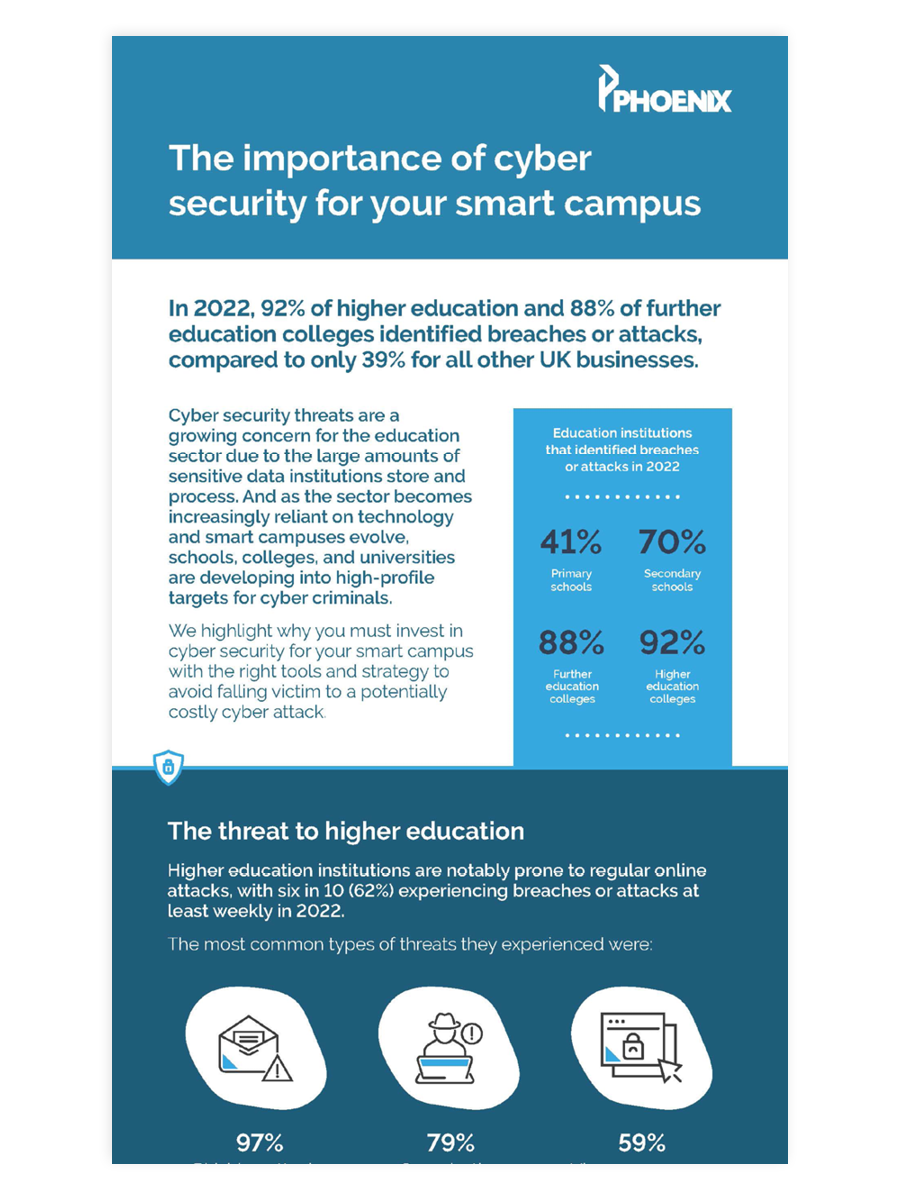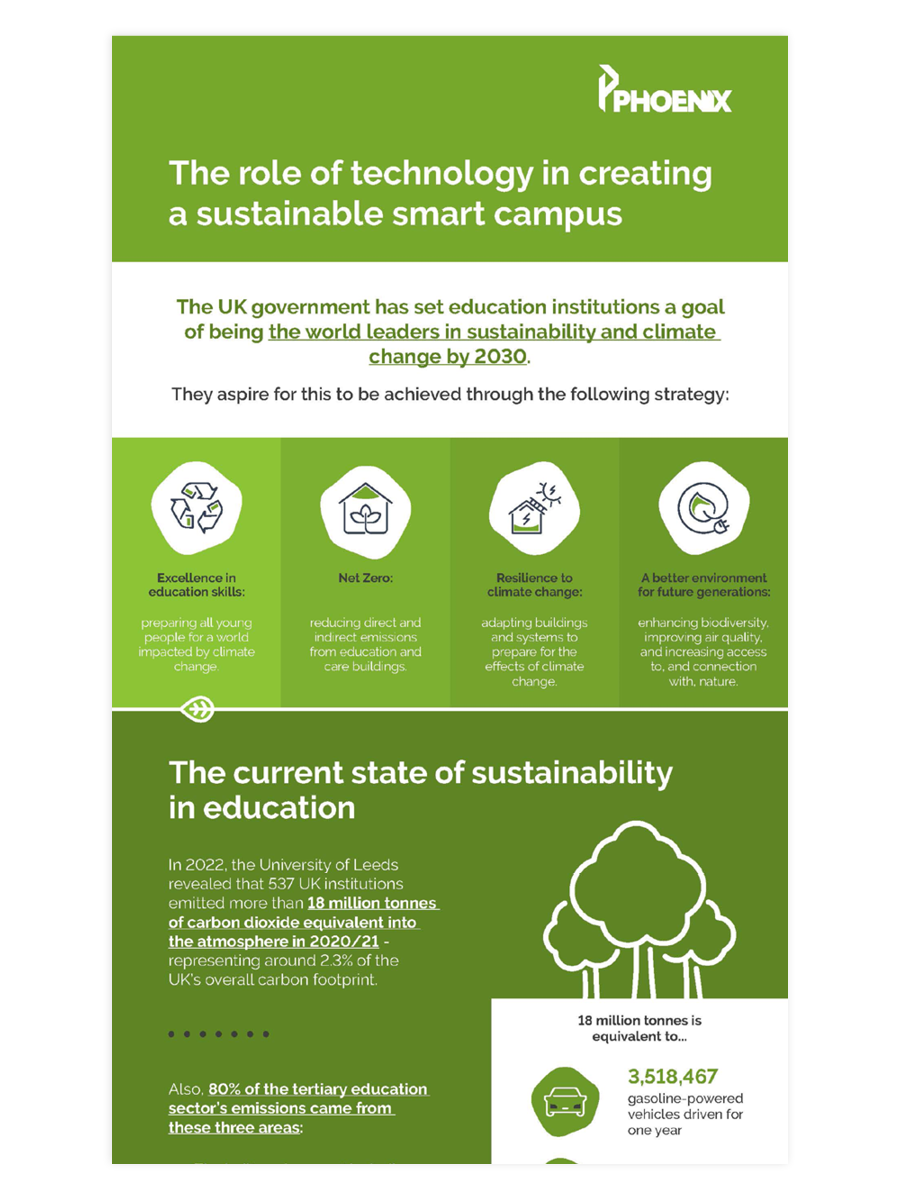Your institution is constantly competing on multiple levels to attract new students, faculty, and staff. Choosing a university with a good academic reputation has always been important for students, but now they’re also taking your on-campus experience into consideration. Is your organisation ready for the smart campus?
Students, faculty, and teaching staff are interested in far more than what happens in the classroom when deciding their place of work or education. Like in their personal lives, they want a seamless and personal experience with technology that simplifies and streamlines their everyday needs – whether that’s travel, extracurricular activities, or living areas. By utilising technologies which other sectors have already become accustomed to using, your institution will begin to meet the needs of your digitally native students and staff. This is where adopting a smart campus is crucial for your institution.
By integrating these different technologies and infrastructure, your campus will become more connected, responsive, and sustainable.
Smart campus case study
What are the benefits of a smart campus?
A smart campus provides your institution with new services and processes to make your student and faculty’s education, work, and life easier and more efficient. By building on the foundations that already exist at your institution, adopting a smart campus will not only make you a more attractive option for both students and staff, but also allow you to operate more efficiently and effectively.
Proactive, data-driven decision-making is important for the development of your educational institution. Smart campuses are constantly collecting real-time data from your students and staff for use across your organisation.
This data provides you with insights into how your students and employees operate on a day-to-day basis, enabling you to create incredibly personalised and efficient experiences.
Ensuring the safety of both your students and staff is always a high priority in educational institutions, whether that’s physically on your campus or online. While higher education campuses are generally a safe space for everyone, added protection against new and more advanced threats is always a necessity.
Campus ID cards and security systems connected to the network assure your students and staff that they’re safe and always tracked. Whereas up-to-date and advanced cyber security and data protection protects your confidential information from hidden threats.
Implementing an IoT infrastructure will not only automate and streamline your processes, but also reduce your operational costs.
By replacing your outdated, inadequate procedures with innovative practices, you’re able to work proactively to address issues and operate effectively. Automation tools will enable you to free up administration time and redirect resources currently assigned to your staff.
Using technology and data analytics, smart campuses provide your staff, faculty, and students with real-time information and access to key resources. Through digital signage, mobile apps, and messaging platforms, your institution can spread campus-wide messaging such as class schedules, building hours, and emergency notifications quickly and effectively.
Additionally, data analytics enables you to identify patterns and trends that help to improve communication and awareness between students, faculty, and staff, such as student engagement and performance.
To meet the UK government’s 25-year environmental plan and net-zero strategy, adopting a sustainable smart campus is a vital step. Smart campuses enable you to improve sustainability in several ways:
- Energy efficiency
- Water management
- Sustainable transportation
- Waste management
- Green buildings










Get support and advice on your smart campus
Speak to us about the challenges your institution is currently facing and what you require adopt and develop into a smart campus.
Supporting a smart campus
As smart campuses adopt a lot of new technologies and processes that you haven’t previously had to manage, they can add extra strain and take up resources without the time or budget to support them. When creating a smart campus, you’ll need to consider extra support for your:
- IT infrastructure
- IoT devices
- Security
- Hybrid work and learning
Catering for all this in-house can be challenging for your institution without extra support, but working with a partner like us saves valuable resources.
How to enhance education with a smart campus FAQs:
With a smart campus, there are many ways a student can improve their engagement. Giving access to way finding tools to navigate the campus or finding available parking or desk space. Additionally, increased security from sensors and cameras managed by AI and automation to manage lighting and footfall requirements.
A smart campus is also able to track a student’s time on campus, usage of internal systems, time spent in libraries and utilising resources, and their grades to track students that require more support.




